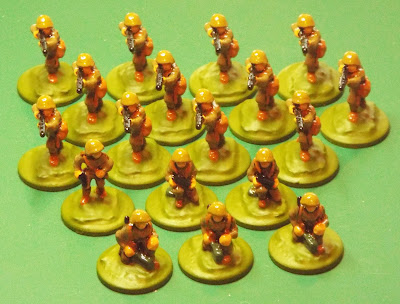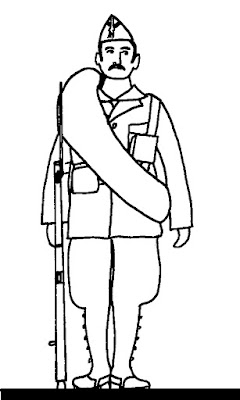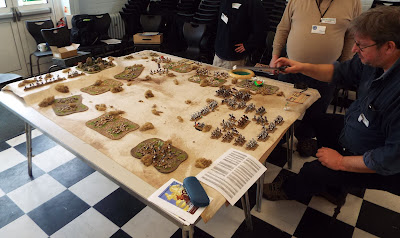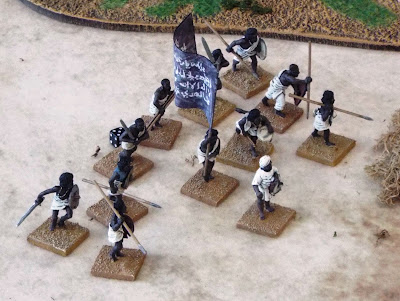It was back at the very tail-end of January that I first began renovating my collection of 20mm-scale World War II figures, and two months on I decided to see just how much progress I had made.
To date, I have renovated, varnished, and re-based ...
In theory, if I continue to renovate my collection of 20mm-scale World War II figures at this rate, I should have completed approximately another six hundred and eighty figures by the end of the year ... and I don't think that I have that many!
I doubt that I will manage to renovate the entire collection by the end of 2019 as I have at least one other project that is going to take precedence ... writing my PORTABLE COLONIAL WARGAME book. That said, it is a project that I can dip into and out of whenever the mood takes me, and will be a good excuse to take a break from other projects whenever I need a bit of 'think time'.
'Think time' is a concept that I developed years ago, and I know is something that other people use as well. Whenever a problem arises that seems to be intractable, I take a complete break for a time to let matters whirl around in my subconscious. Almost always a solution will come to me when I am not consciously thinking about the problem.
At one stage in my career, I worked as a local government education adviser, and when I had something difficult to sort out, I'd often leave the office and go for a short walk. This used to drive my then-boss to distraction, because he thought that I should be sitting at my desk working rather than taking what he saw as an unnecessary break. I explained what I was doing and why I was doing it ... but he was from the 'work-rate' school of management who thought that the more you worked at a problem, the better. (It is also sometimes referred to as the 'running around like a blue-arsed fly' school of working, where being seen to 'work' is actually better than actually doing anything productive!)
It is interesting to note that some years later he was sacked for managerial and financial incompetence.
To date, I have renovated, varnished, and re-based ...
- Seventy-six Russian figures
- Fifty-one German figures
- Nine Spanish figures
- Eighteen Hungarian figures
In theory, if I continue to renovate my collection of 20mm-scale World War II figures at this rate, I should have completed approximately another six hundred and eighty figures by the end of the year ... and I don't think that I have that many!
I doubt that I will manage to renovate the entire collection by the end of 2019 as I have at least one other project that is going to take precedence ... writing my PORTABLE COLONIAL WARGAME book. That said, it is a project that I can dip into and out of whenever the mood takes me, and will be a good excuse to take a break from other projects whenever I need a bit of 'think time'.
'Think time' is a concept that I developed years ago, and I know is something that other people use as well. Whenever a problem arises that seems to be intractable, I take a complete break for a time to let matters whirl around in my subconscious. Almost always a solution will come to me when I am not consciously thinking about the problem.
At one stage in my career, I worked as a local government education adviser, and when I had something difficult to sort out, I'd often leave the office and go for a short walk. This used to drive my then-boss to distraction, because he thought that I should be sitting at my desk working rather than taking what he saw as an unnecessary break. I explained what I was doing and why I was doing it ... but he was from the 'work-rate' school of management who thought that the more you worked at a problem, the better. (It is also sometimes referred to as the 'running around like a blue-arsed fly' school of working, where being seen to 'work' is actually better than actually doing anything productive!)
It is interesting to note that some years later he was sacked for managerial and financial incompetence.



































































































